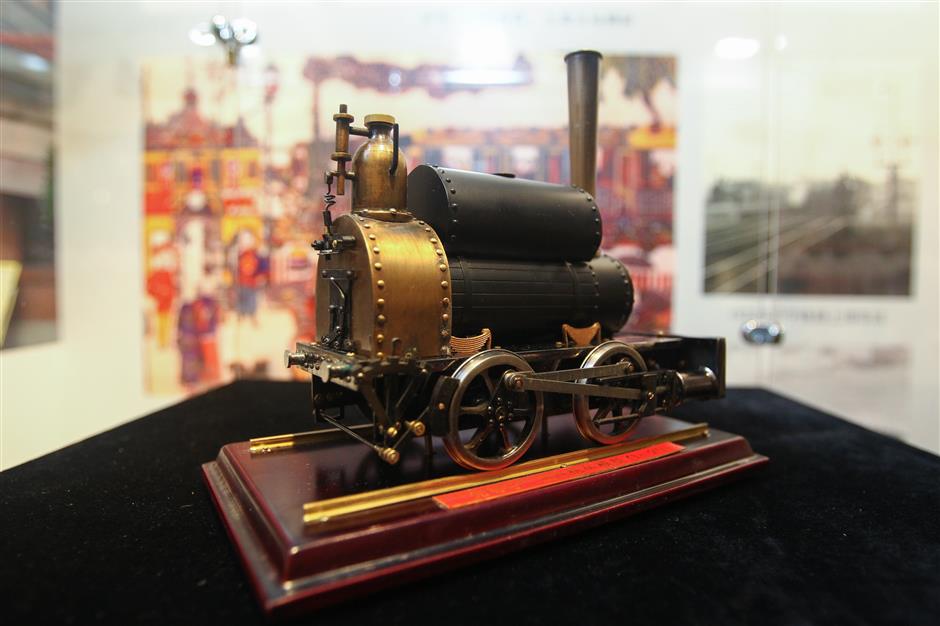Once belittled area undergoes renaissance

Renovation work on China’s first chamber of commerce building in the Beizhan Community is nearly complete.
Not all that many years ago, the north bank of Suzhou Creek was called xiazhijiao, or “inferior corner,” by locals because it was riddled with shacks and makeshift shelters.
Nowadays, the area is undergoing a rebirth, restoring what was once the cradle of commerce and finance in Shanghai into an upmarket riverside community.
Modern it may be, but the past will co-exist with the contemporary in a unique urban renewal plan that preserves icons of history, according to Jing’an District’s cultural authority.
The Beizhan Community in the center of the urban renewal area is home to many historical sites. A special exhibition highlighting its culture and history is being held through April 19. Displays of old photos and other mementos of the past can be viewed free of charge.
“The community sits on a line that used to divide an old international settlement from a walled-off area for Chinese residents,” said community official Li Jing.
This is the site where China’s oldest railway station was erected, where the first Chinese-run silk reeling factory was operated, where China’s first modern chamber of commerce was founded and where the first Western-style court was established. A cluster of old warehouses and shikumen buildings still stand there, each with a story to tell.
“The area offers a perfect example of how the railway brought prosperity,” Li said.

Historical photos, machinery, street signs and other memorabilia are part of the Beizhan Community exhibition.

China’s oldest railway, the Wusong Railway, went into operation 142 years ago, with a terminal near Qipu Road. In 1909, the former Shanghai North Railway Station, known locally as lao beizhan, opened on Tianmu Road E.
Rows of residential buildings, stores, factories and warehouses soon sprang up around it. Today, 17 former banks and warehouses from the old days remain. Many have been restored to their original facades.
The decades-old Sihang Warehouse, which served as military headquarters for the Japanese during their occupation of Shanghai during World War II, has been converted into a wartime memorial. Around the warehouse, Chinese and Japanese soldiers engaged in a fierce four-day battle in 1937.
Other surrounding old warehouses have been turned into an innovation park, housing studios, workshops and galleries.
China’s first chamber of commerce chamber was founded here. The offices for the chamber on Suzhou Road North were completed in 1916. Renovation on the building is nearly completed.

The area is also a museum of shikumen architecture, featuring buildings from different eras, in different styles. Most have been well preserved as a neighborhood.
This area was the birthplace of shikumen, where neighborhoods of the iconic Shanghai style were built on both sides of Shanxi Road North in the 1870s. They feature traditional siheyuan courtyards and Western-style townhouses.
The area also has Spanish-style townhouses inside the Junyili neighborhood, garden villas featuring both Western and Eastern characteristics, and veranda-style colonial buildings. The area also is home to the former residence of renowned artist Wu Changshuo.
To retain the flavor of the past, the district’s cultural authority devised a protection plan, based on a report by Chen Fei and Zhou Jian, professors at Tongji University.
The plan has been submitted to Shanghai Urban Planning and Land Resources Bureau for review and approval, according to Zhang Zhong, deputy director of the district’s cultural authority.
In the report, the professors suggest categorizing the various old buildings and preparing different protection plans for each category.
Old buildings with protected status should be retained as a whole, the report said. Those with high historical value that aren’t on the protected list should have facades renovated and repaired, and those with some historical value should be rebuilt using original materials where possible. For other structures, original design facets should be retained.
“It should be a place where people can have a glimpse of the old railway station and its surroundings,” said Ruan Yisan, another professor from Tongji University. “Many famous figures left their marks here, and the architecture style is quite diverse.”
Ruan said protecting historic buildings does not mean saving one or two for people to visit and demolishing the rest.
“Some of the shantytowns in the areas should be demolished,” he said. “But we should do our utmost to preserve an authentic historical area.”
















